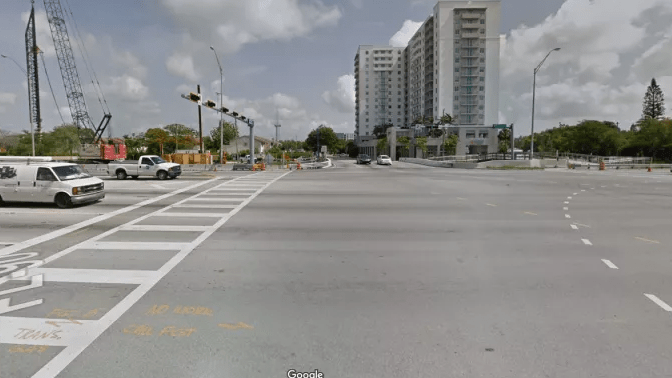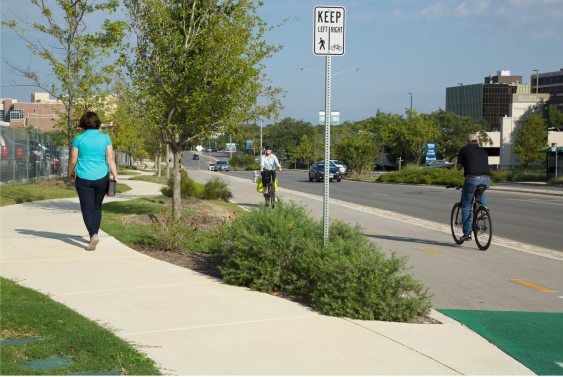Six people are dead after a recently-installed pedestrian bridge collapsed at Florida International University in Miami yesterday. Eight cars were trapped under the rubble when the 950-ton structure, which was built using "accelerated bridge construction" techniques and completed just Saturday, gave way.
It's an unspeakable tragedy, and for a day or two at least, it will focus the nation's attention on "infrastructure" issues.
You can expect most coverage to treat this as a story about construction failure. But the situation begs reporters to step back and consider a broader perspective.
The pedestrian bridge was installed to give students a safe way to walk across Southwest 8th Street, an eight-lane road that divides the campus from the Sweetwater neighborhood, where about 4,200 university students live.
This highway-like road is very dangerous. A driver killed an 18-year-old student trying to cross the street in August, and students demanded action to improve safety.
The university, the city of Miami, or the state DOT could have tried to make the whole street safer. Southwest 8th Street is clearly too wide, and there are a number of ways to narrow crossing distances and reduce dangerous speeding, like adding concrete median islands, or replacing car lanes with wider sidewalks.
Instead, the state of Florida chose a solution that would not disrupt the configuration for motorized traffic in any way: a pedestrian bridge. The bridge cost $14 million and was funded by a federal TIGER grant.
Not only did the design solution prioritize fast-moving cars, so did the construction technique. The quick-build approach was chosen to "keep the inevitable disruption of traffic associated with bridge construction to a minimum," according to the university.
While the bridge was going up, the university police were conducting their own "pedestrian safety program." It started with handing out warnings to pedestrians and cyclists before ramping up with fines for people jaywalking or not using sidewalks. (The campaign also targets drivers who fail to yield, though most warnings went to pedestrians.) The bridge collapsed the day after police announced the blitz of $78 tickets.
Florida routinely ranks as one of the most dangerous states in the country for walking. And if you pan out on this environment, it's easy to see why. The FIU campus is designed around the movement and storage of cars and is dominated by parking. Locals tell us that there is really no transit access to the university except for a couple of out-of-the-way bus stops.
In 2015, the Miami Dade Metropolitan Planning Organization released a study of the 8th Street corridor [PDF]. Though it mentioned the FIU campus, the report focuses almost exclusively on speeding up car traffic, not pedestrian safety. The planning agency rejected the addition of bus lanes and instead elected to make the road more like a highway, with grade separations at two intersections.
For its part, Florida International University has been making efforts to calm traffic within its campus. But regional and state planning officials clearly have other priorities.
The National Transportation Safety Board is headed down to Miami to investigate this case -- like they do whenever there's a high profile disaster. And they're likely to examine the bridge construction process and point out defects -- as they should.
But if history is a guide, they will probably ignore the wider context. And that's a shame. An effective approach to traffic safety would consider the dangerous conditions for pedestrians that led to the construction of the bridge in the first place. If we don't think critically about these systemic risks, our transportation networks will keep on failing at public safety.






